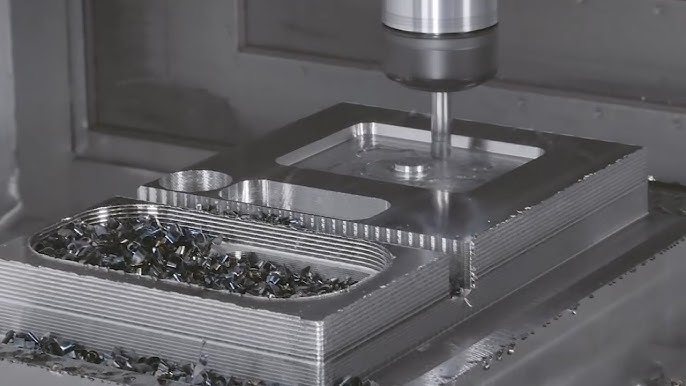
What features determine the perfect sailboat mast? Can a boat cut through the waves because of its lightweight agility? Or the power that ensures steadiness and fortitude amid strong winds? Sailboat engineers and designers are pushing the limits of technology to strike the perfect balance between strength, accuracy, and weight. CNC (Computer Numerical Control) milling has revolutionized this process.
However, how precisely does CNC milling aid in the creation of masts that are both sturdy enough to endure the sea's rigors and lightweight enough to increase speed? What part does material selection play in this equation, and how may a mast's performance in different sea conditions be influenced by the accuracy of CNC machining? Most importantly, how do manufacturers make sure that these high-performance masts can withstand harsh weather conditions and years of exposure to saltwater without losing their structural integrity?
These problems will be covered in this article as we go into the intriguing realm of CNC milling sailboat masts, examining the complex interplay between design and technology leading to a mast that is appropriate for both competition and exploration. We'll explore the science underlying material selection and the meticulous accuracy of CNC techniques to reveal the secrets of creating a mast that is not only sturdy and dependable but also perfectly suited to a sailor's need for performance and speed.
2. The Evolution of Mast Design: From Traditional to CNC Machining
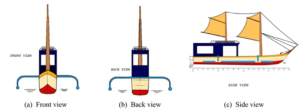
A small boat mast design with a tent cove and a tall mast
How did sailboat masts go from being made of solid wood to being elegant and incredibly light today? And how was once a labor-intensive art become a precise science due to advancements in technology like CNC machining?
For generations, masts were made by hand from wood, which was sturdy, heavy, and painstakingly chosen by craftspeople who used their creativity and intuition to shape each piece. Despite their usefulness, these wooden masts had drawbacks, including their weight and the unpredictability of natural materials. Mast needs to be increased as sailboats develop and require greater speed, agility, and durability.
Lighter materials like aluminum and, subsequently, high-performance composites like carbon fiber were investigated as a result of this change. However, even with the aid of new materials, it was still difficult to strike the ideal balance between strength, weight, and flexibility. The accuracy and potential of mast design advanced dramatically with the advent of Computer Numerical Control (CNC) machining.
Achieving the perfect strength-to-weight ratio that contemporary sailboats demand requires precise tolerances and consistent accuracy, which CNC milling provides. In addition to making the use of composite materials possible, this development made it possible to create intricate, personalized designs that maximize a mast's structural performance and aerodynamic profile. With CNC machining, engineers can confidently push the envelope and create masts that are lighter, more robust, and perfectly customized to each vessel's requirements, in contrast to traditional approaches that mostly depend on manual labor and intuition.
An important turning point in the sailing industry was the switch from conventional techniques to CNC milling. Modern mast design uses innovative methods to improve sailors' performance on the ocean by fusing the accuracy of CNC machines with the artistry of traditional workmanship.
Current sailboat mast designs are the outcome of improvements in technological integration, materials, and aerodynamics, which enhance performance, robustness, and use. Among the most prominent trends is the growing adoption of composites made of carbon fiber.
- Recent mast designs have also placed a strong emphasis on aerodynamics. The oval or teardrop cross-section of many contemporary masts reduces aerodynamic drag and promotes more even airflow over the sails. Because even slight speed increases can make all the difference in a race, this design is very helpful.
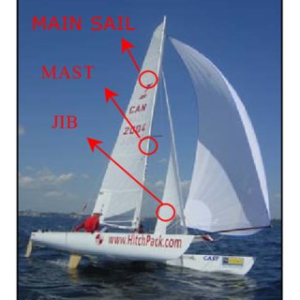
Aerodynamic improvement of sailboat
- Additionally, integrated technology has been included in new mast designs. Embedded sensors on many contemporary masts now track different weights, wind speeds, and angles, sending information to a mobile device or the cockpit. With the aid of this technology, sailors can maximize sail trim and steer clear of heavy loads that can harm the mast in real time.
- Height, weight, cross-sectional area, and material are all balanced in modern mast designs to improve particular performance variables like speed, durability, and handling ease. These parameters are increasingly adapted to the distinct sailing goals of each type of vessel.
3. Lightweight Materials Used in Mast Components
What makes a mast light and sturdy enough to maximize a sailboat's speed while withstanding wind forces? Modern masts are made of lightweight, sophisticated materials, which hold the key to the solution. Heavy metals and wood have provided a way for high-performance materials that strike the perfect mix between weight reduction, flexibility, and durability as designers have evolved. Here is the list of preferred lightweight materials.
- Aluminum: One of the first materials to be used in mast construction instead of wood was aluminum. It was well-known for being lightweight and corrosion-resistant, and it greatly reduced weight while still being strong enough for sailboats that were tiny to medium in size. Because of its strength and affordability, aluminum was a popular choice, but it also indicated the beginning of the search for even stronger and lighter substitutes.
- Carbon Fiber: The unmatched strength-to-weight ratios of carbon fiber transformed mast design. Despite being more expensive, carbon fiber is perfect for high-performance and racing sailboats due to its high stiffness and low weight. It enables improved balance on the water, increased responsiveness, and quicker acceleration. Because of its remarkable qualities, carbon fiber has emerged as the preferred material for building high-end masts, particularly when precisely built using CNC machining.

- Composite Materials: Composite masts are made from a variety of materials, such as fiberglass and carbon, to provide parts with special properties suited to certain sailboat requirements. Fiberglass gives flexibility and is lighter than aluminum, whereas carbon fiber adds strength and rigidity. For bigger boats, when the combination of great durability and lightweight is crucial, these composites are particularly beneficial.
- Titanium: Titanium is occasionally utilized in particular mast components, such as fittings or strengthening areas, despite being expensive and scarce. It is perfect for important stress spots on a mast because of its exceptional strength and resistance to corrosion from saltwater. However, titanium is usually only used in high-end or racing applications because of its weight and cost.
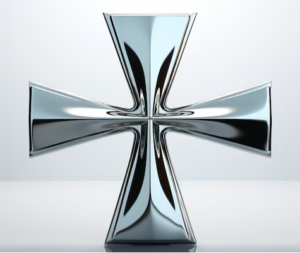
4. CNC Milling and Machining Techniques for Mast Components
How can sailboat mast performance and durability be enhanced using CNC machining techniques? CNC (Computer Numerical Control) technology has made it possible to manufacture mast components with currently unachievable accuracy and consistency. Manufacturers may create complex, unique designs and attain precise tolerances by employing advanced milling processes, which improve a mast's strength, balance, and aerodynamic profile. A closer look at the CNC milling and machining methods that have revolutionized mast design is provided here.
- 3D Profiling and Contouring: The ability of CNC machining to produce intricate, curved profiles that are crucial for aerodynamics is one of its primary benefits. Smooth, streamlined shapes made possible by 3D profiling maximize wind flow around the mast and minimize drag. Sailors can travel faster and more efficiently on the ocean due to this precise shaping, which is frequently utilized for carbon fiber and aluminum masts.
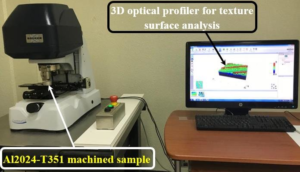
- Multi-axis machining: CNC machines can mill items from various angles without repositioning themselves since they can work on several axes. This function is very helpful when making complex mast parts with precise symmetry and consistency, such as spreaders, brackets, and rigging points. Multi-axis machining results in a more dependable end product by cutting down on manufacturing time and minimizing possible errors.
- Hollow Core Milling: CNC milling enables hollow core designs that preserve strength while cutting extra bulk, which is crucial for mast design. Manufacturers can attain the optimal strength-to-weight ratio and produce a lighter mast without sacrificing performance by carefully cutting out interior material. Carbon fiber masts for competitive sailing frequently use hollow core designs.
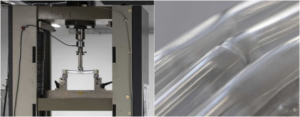
Hollow Core 3D Printing in large scale production
- Precision Slotting and Drilling: Fittings and rigging attachment slots and drill holes may be precisely positioned due to CNC machining. CNC technology makes sure that every fitting is firmly positioned by precisely positioning these characteristics, which improves the mast's longevity and makes rigging installation simpler. For load-bearing points, where any misalignment might compromise structural integrity, this accuracy is particularly crucial.
- Polishing and Finishing autonomously: CNC machines frequently incorporate finishing operations, which are crucial for producing a smooth surface that lowers wind resistance. Additionally, autonomously polishing prolongs the life of metal parts exposed to the sea, such as aluminum masts, and helps to prevent corrosion. A consistent, high-quality surface that would be difficult to accomplish by hand is guaranteed by automated finishing.
5. Optimizing Strength-to-Weight Ratio in Mast Components
Finding a suitable compromise between strength and weight is one of the most difficult aspects of mast construction. The mast can sustain heavy loads and dynamic stresses from the wind and waves while remaining light enough to retain speed and agility due to a well-balanced strength-to-weight ratio. How, then, do manufacturers and engineers maximize this crucial ratio? The following are the methods and resources that enable it:
- Combination & Material Selection: The first and most crucial stage in striking a balance between weight and strength is selecting the appropriate materials. For example, carbon fiber has one of the highest strength-to-weight ratios, which makes it perfect for racing and high-performance masts. In order to further optimize a mast's flexibility, weight, and load-bearing capacity, designers can combine carbon fiber with materials such as fiberglass to create composite structures that optimize performance without adding unneeded bulk.
- Tapered and Hollowed Designs: Manufacturers can use CNC milling to produce hollow and tapered core parts for the mast, which lower weight while preserving the strength required at load-bearing locations. Tapering modifies the thickness of the mast at various points, adding material where stress is greater and decreasing it where less support is required. Carbon fiber masts with hollow cores, which reduce total weight while preserving structural integrity, are stronger and more agile.
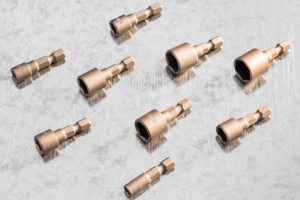
- Strategic Reinforcement: Strength can be increased without needlessly adding weight to the entire mast by strategically reinforcing important stress spots. For instance, the masthead, rigging attachment points, and spreader mounts can all be precisely reinforced thanks to CNC machining. Designers make the most lightweight and strong by concentrating strength where it is most needed and avoiding overbuilding in other parts.
- Finite Element Analysis (FEA) Testing: Before manufacturing, engineers utilize FEA to model the mast digitally and simulate real-world loads. Before manufacturing, this simulation aids in identifying weak points and maximizing material distribution. Every part of the mast is optimized for the forces it will experience according to FEA testing, which also helps to improve performance by removing extra weight. Particularly in high-performance racing masts, where even minor weight reductions can have a big impact, this digital method is helpful.
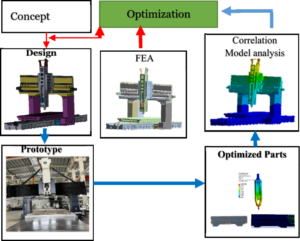
A gantry-type high-precision machine tool's structure optimization and finite element analysis
- Precision Cutting and Shaping with CNC: CNC machining enables precise shape and profile, resulting in streamlined surfaces that lower drag without sacrificing the structural integrity of the mast. Engineers can improve the strength-to-weight ratio by removing unnecessary material at the nanoscale level thanks to this accuracy. As a result, the mast has optimal strength precisely where it is needed and less aerodynamic drag.
- Low-Density, High-Strength Fasteners and Components: Although they may not seem like much, brackets, rigging points, and fasteners are all crucial to the total weight. For these parts, lightweight alloys like titanium, which are low-density but high-strength materials, reduce weight without sacrificing the mast's longevity. The result of this attention to detail is a lighter, more balanced mast.
6. Benefits of CNC Machining for Mast Components
Why is CNC machining the preferred method for creating sailboat mast parts? The advantages are numerous, providing enhancements in accuracy, efficiency, and design adaptability that conventional production techniques just cannot match. The main benefits that CNC machining offers to the manufacture of mast components are broken down as follows:
- Unmatched Accuracy and Reliability: One of the main benefits of CNC machining is its capacity to create extremely accurate parts with little fluctuation. Whether it's the complicated connections for rigging or the intricate curves of a carbon fiber mast, CNC machines can replicate precise requirements with remarkable precision. Every mast component is made to exact tolerances due to this degree of accuracy, which produces precisely aligned pieces that fit together flawlessly and function at their best.
- Customization and Complex Designs: CNC machining makes it possible to create incredibly challenging and complex designs that would be impossible to accomplish manually. Optimizing the aerodynamic profiles of mast components is especially crucial because even minor design changes can significantly affect performance. Additionally, unique designs can be made using CNC machining, which allows the mast to be tailored to the particular requirements of a boat and the sailing environment. Whether it's a hollow core, tapered profile, or custom fittings, CNC machining provides unparalleled versatility.
- Material Efficiency and Weight Reduction: CNC machines use materials extremely efficiently. Manufacturers can eliminate extra material from the mast components without sacrificing strength by meticulously arranging the cuts and machining routes. To maximize the mast's total strength-to-weight ratio, lighter, stronger components are produced as a result. Because every gram matters in high-performance racing boats, weight reduction is very important.
- Faster Production Times: When compared to conventional methods, the time needed to make mast components is greatly decreased using CNC machines. CNC machines may operate continuously when the design is complete, cutting down on production time and accelerating the manufacturing process as a whole. When working on custom or high-volume projects, this is extremely helpful because it enables shorter turnaround times and client delivery.
- Repeatability and Scalability: CNC machining guarantees that every component is made with the same degree of precision and quality, whether it is part of a bigger production run or a one-off custom design. For various elements to remain consistent, especially in mass-produced masts or while building multiple boats, this repeatability is essential. CNC machines can readily duplicate a successful mast design on a bigger scale, guaranteeing consistently high-quality outcomes.
- Economical Testing and Prototyping: Before committing to full-scale manufacturing, designers can swiftly test and modify their mast components due to CNC machining's ability to provide rapid prototyping. When testing various materials, shapes, or configurations, CNC machining offers an affordable means of experimenting and improving designs, preventing expensive errors in the finished product. Additionally, this guarantees that only the best, most effective designs are produced.
7. Case Studies of CNC Machining in Mast Manufacturing
Case Study 1: ApexRapid – Aerospace Component Precision
Problem: ApexRapid was faced with the task of producing extremely intricate aircraft parts that needed to be precise and lightweight. In high-performance industries like aerospace and marine engineering, it is customary to have parts that are both lightweight and exceed strict durability demands.
Solution: To address these problems, ApexRapid resorted to CNC machining. They were able to precisely create robust, lightweight components with intricate geometries by utilizing sophisticated CNC milling. The technique reduced the time between design and manufacturing by enabling fast turnaround times and rapid prototyping. By ensuring that the components were optimized for strength-to-weight ratios using CNC machining, they were able to achieve the high-performance requirements required for both maritime and aeronautical applications.

Case Study 2: DATRON – Prototyping and Production Cycle Efficiency
Problem: Potomac Photonics, a client of DATRON, was having trouble moving from prototype to production due to lengthy lead times and inefficiencies. The product development cycle was delayed by the slowness and high cost of traditional manufacturing techniques, especially when creating pieces that needed to be extremely precise.
Solution: To improve manufacturing efficiency, DATRON used CNC milling technology. The lead time was significantly reduced and less manual intervention was required thanks to their robots' ability to precisely manufacture parts straight from digital models. DATRON assisted Potomac Photonics in cutting expenses and increasing the effectiveness of its production cycle by facilitating quick prototyping and instant production scaling. For sectors like yachting, where part accuracy and speed-to-market are essential, this approach is essential.
8. Quality Control and Testing in CNC-Machined Mast Production
Thorough testing processes are necessary to ensure the quality of CNC-machined mast components, and these processes are frequently governed by ASTM (American Society for Testing and Materials) standards. The following lists the main testing and quality control techniques used in mast manufacture, along with the pertinent ASTM standards:
1. Dimensional Accuracy and Tolerance Testing:
- Testing Method: Coordinate Measuring Machines (CMM) are used to evaluate the size, shape, and fit of parts to make sure CNC-milled mast components meet the necessary dimensions.
- The ASTM E2875 standard is known as the "Standard Guide for Digital Contact Gage Systems." This standard offers recommendations for guaranteeing precise and trustworthy dimensional measurements in high-precision manufacturing.
2. Material Quality Inspection:
Testing Method: Non-destructive testing (NDT) methods like X-ray and ultrasonic examination are used to find internal flaws in materials like carbon fiber and aluminum. This ensures that no defects weaken the material.
ASTM Standards:
- The "Standard Guide for Radiographic Examination" (ASTM E1742) is used for X-ray examination.
- The ASTM E317"Standard Guide for Ultrasonic Testing" is a useful resource for ultrasonic examination, particularly when it comes to metals and composites.
3. Surface Finish Testing:
- Testing Procedure: To make sure the mast components have the necessary smoothness, which is essential for aerodynamics and decreased drag, a profilometer evaluates surface roughness.
ASTM Standard:
- The ASTM B601 standard is titled "Standard Test Method for Assessment of Surface Roughness of Metal Surfaces Using a Stylus Instrument." This standard can be used to assess the surface quality of materials such as carbon fiber and aluminum.
4. Strength and Load Testing:
- Testing Method: Static and dynamic load testing are performed on mast components to replicate the forces—such as wind gusts and rigging pressure—that they may encounter in actual sailing circumstances.
- Standards of ASTM:
Tensile and compression tests that are relevant to metals used in mast construction are covered in ASTM A370, "Standard Test Methods and Definitions for Mechanical Testing of Steel Products."
"Standard Test Method for Tensile Properties of Polymer Matrix Composite Materials" (ASTM D3039) is especially pertinent when testing composite materials such as carbon fiber. Strength and Load Testing:
5. Fatigue Testing:
- Testing Method: Mast components are put through numerous stress cycles to mimic long-term use and find any possible fatigue areas that could cause failure.
- This is ASTM E606, which is the "Standard Test Method for Strain-Controlled Fatigue Testing." In order to make sure the mast components can withstand repeated stresses without failing, this standard is used to test the fatigue resistance of materials.
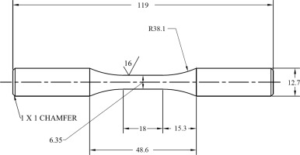
6. Final Assembly and Functional Testing:
- Testing Method: To make sure the rigging is attached properly and that the mast's structural integrity is unharmed, the assembled mast is put through functional testing.
ASTM Standard:
- Despite being primarily concerned with timber, ASTM Standard D198, "Standard Test Methods of Static Tests of Lumber in Structural Sizes," offers recommendations for evaluating the structural integrity of parts that need to be able to support loads. These guidelines are helpful in confirming the stability and construction of masts.
9. Future Trends in Mast Machining
The industry of mast production stands to gain from a number of new developments as technology advances, which could further improve the accuracy, effectiveness, and personalization of CNC machining for masts. These major developments are anticipated to influence mast output in the future:
- Advanced Composite Materials and Multi-Material Masts: It is expected that the utilization of cutting-edge composite materials, such as thermoplastic composites and high-strength carbon fibers, would rise. Compared to conventional metals, these materials have better strength-to-weight ratios, greater durability, and improved resilience to environmental stress. Multi-material masts that deliberately place strength where it is most needed, such as carbon and titanium, could offer optimal performance.
- The integration of additive manufacturing, often known as 3D printing, is starting to support conventional CNC machining. CNC and 3D printing are combined in hybrid manufacturing methods to create sophisticated, lightweight structures with reduced material waste. In terms of mast manufacturing, this can entail quick prototyping of mast components as well as customized pieces and complex lattice structures that minimize weight without compromising strength.
- Automation and Smart Manufacturing: Mast machining is becoming more automated due to Industry 4.0 concepts like machine learning and the Internet of Things (IoT). CNC machines integrating IoT sensors and machine learning algorithms can anticipate maintenance requirements, save downtime, and optimize machining settings in real-time. This enables faster adaptation to unique mast designs, increased accuracy, and shorter production cycles.
- Increased Precision with 5-Axis CNC Machining: Since 5-axis CNC machining offers more flexibility and precision than traditional 3-axis machining, it is gradually being added to the mix. Five-axis machining allows for smoother, more intricate curves to be machined with fewer setup adjustments, saving time and labor costs. Using this technique to create streamlined mast profiles that reduce drag and enhance performance on the water is especially beneficial.
- Personalized, On-Demand fabrication: CNC machining developments are enabling the fabrication of entirely customizable masts on demand. In order to optimize each mast for its intended sailing environment, companies are now able to build masts with distinctive profiles that are customized for certain yachts. Customizable fabrication creates new opportunities for custom mast designs that are suited to specific sailors and their vessels while also cutting lead times.
10. Conclusion
The design and manufacturing of sailboat masts have changed as a result of the advancement of mast machining, which is fueled by CNC technology. Manufacturers can now attain remarkable precision, optimize strength-to-weight ratios, and construct complex designs that enhance performance on the water thanks to CNC machining. The industry's dedication to innovation and quality control is evident in everything from AI-driven design to new materials and additive manufacturing.
Future developments like automated, Internet of Things-enabled manufacturing, 5-axis machining integration, and sustainable machining techniques are opening the door to even more flexibility and efficiency in mass production. Mast manufacture, with CNC machining at the forefront, is well-positioned to meet the needs of modern sailing in the future by providing sailors with high-performance masts that are robust and lightweight, ready to face the trials of the open sea. With cutting-edge CNC machining technology, BaiChuan CNC Milling Shop can offer customized solutions for those dealing with precise production difficulties. Whether you require rapid prototyping, complex geometries, or high strength-to-weight ratios, BaiChuan's experience guarantees precision, effectiveness, and superior outcomes that satisfy exacting industry standards. This blog was helpful for you? Let us know by commenting below.






